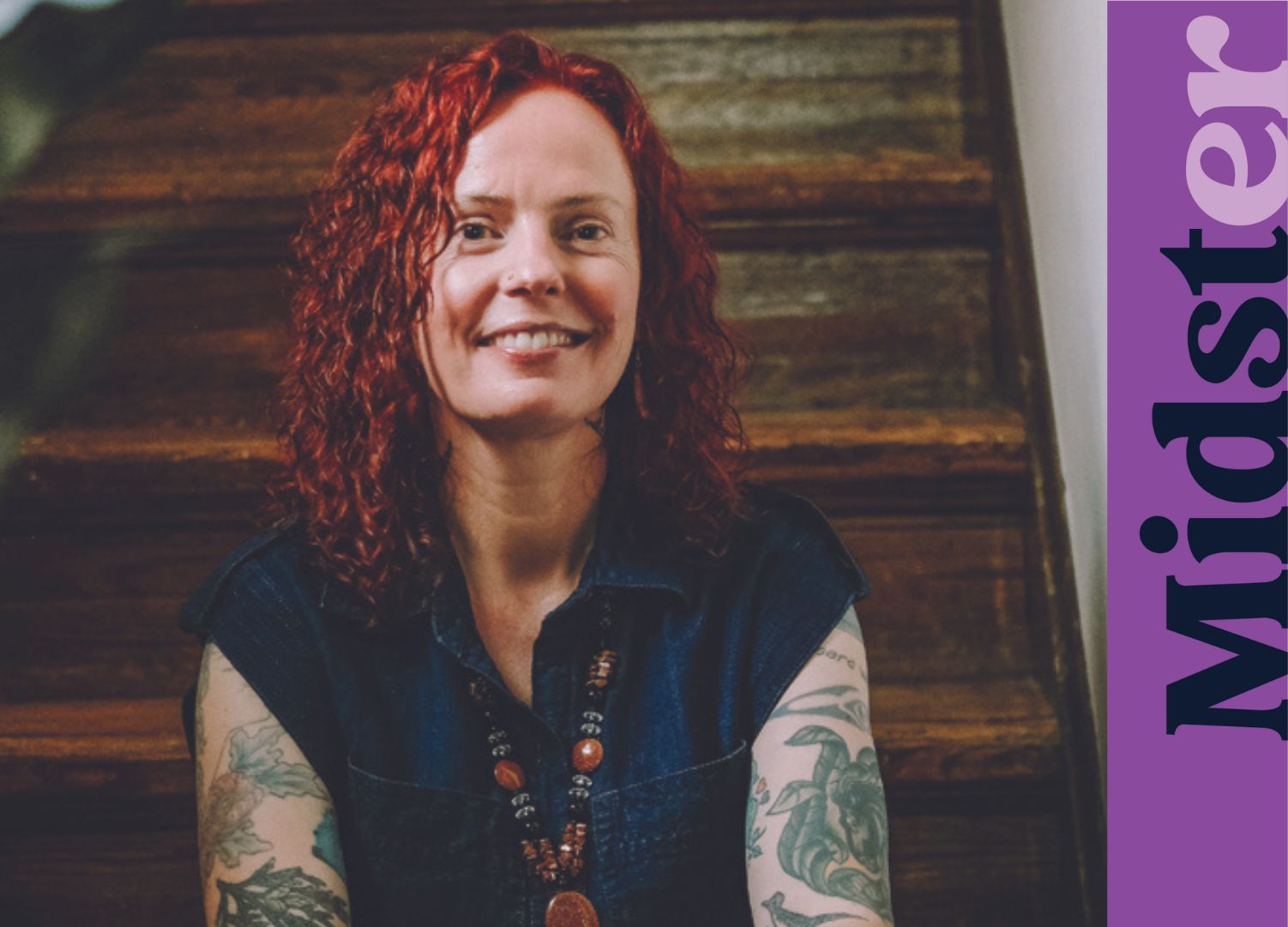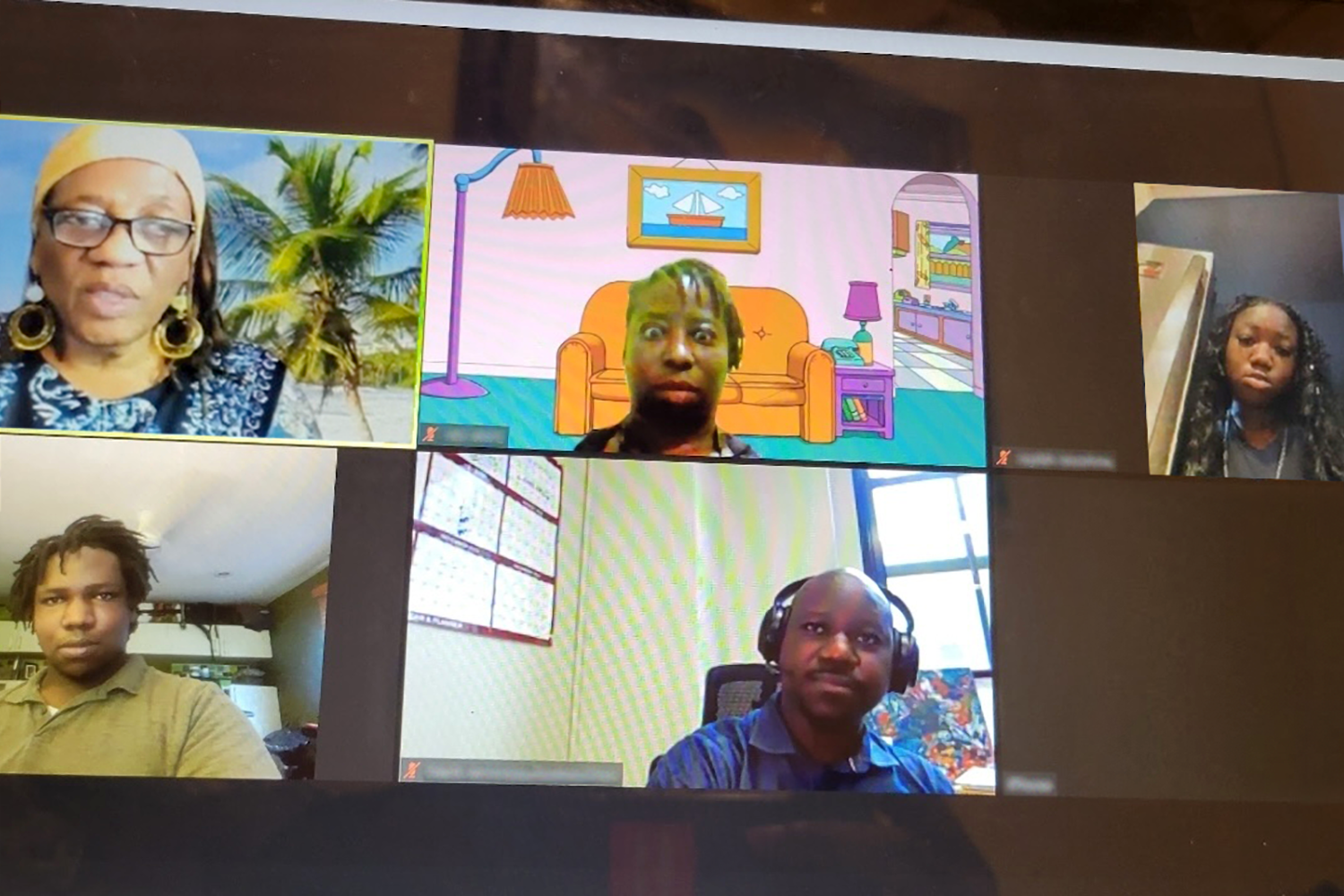
Trans-parent: What to do when your 21-year old son becomes your daughter
In the late spring of 2022, my son came home for his first summer break from college. He’d just completed his freshman year. It wasn’t a good one. We just didn’t know it until five days after driving from Washington, D.C., up to Michigan and back on Mother’s Day to pack up a few of the things in his dorm room. The week after we returned home, we received his report card. It wasn’t even close to a 2.0! This, from our kid who was an AP student in high school. By week’s end, we got a letter from his college basically saying it’d be best to part ways until he got his act together.
“What happened?” “How did this happen?” “What went wrong?” “What were you doing?” “Why didn’t you tell us?” … were just a few of the questions hammered their way by their dad, stepdad, and myself. We got minimal, unsatisfactory and blank responses. But later, when I was alone with my child, they confided the reasons for this chaotic year and grades. For a few days, I kept this information to myself, mostly because I didn’t think it related to his flop of a first year at college.
In the meantime, my mother, from 3,000 miles away, decided she’d take the reins. She aimed to be her grandchild’s champion by hosting weekly Zoom calls to offer support and chart a new academic path for her “Golden Boy.” The entire family was summoned, including myself, my husband (stepdad), my ex-husband (the kids’ biological father), and my child’s then-16-year-old sister. After glossing over academics and next steps, my “son” spilled to everyone what he told me in confidence just a few weeks prior: “I want to be a woman.”
The entire family was summoned, including myself, my husband (stepdad), my ex-husband (the kids’ biological father), and my child’s then-16-year-old sister. After glossing over academics and next steps, my “son” spilled to everyone what he told me in confidence just a few weeks prior: “I want to be a woman.”
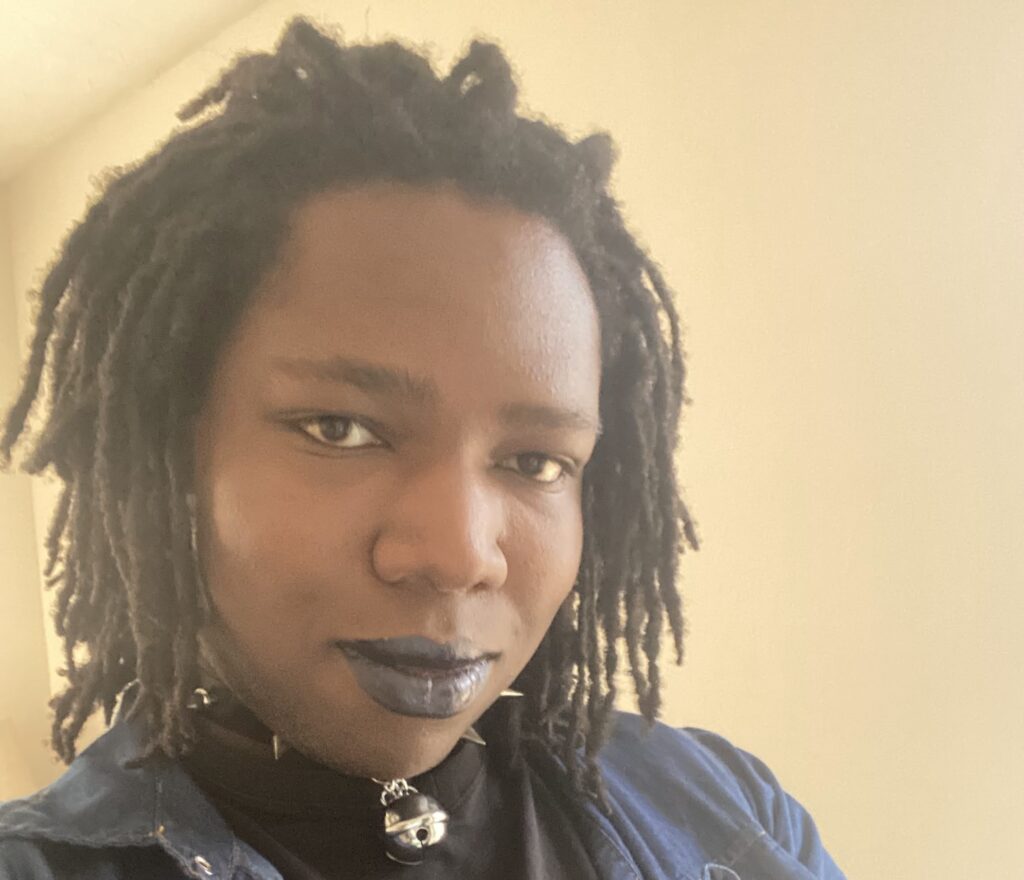
Focusing on the wrong thing with my trans child
Moments after my child rolls out the news, my mother finds her sunglasses on her desk and slides them onto her face. She clears her throat in nervous disbelief. Though she’d been the self-appointed Zoom facilitator, she went quiet. As for myself, when it came to my child, I felt as though my championing, advocacy and protection had begun 22 years ago when they were just a fetus, in my belly. I’d spent the last two decades ensuring my kids stayed out of harm’s way — for me, that specifically meant jail and prison, because for nearly 20 years, I’d worked in the criminal legal reform space, fighting for the human rights of incarcerated and formerly incarcerated people. Since my kids were ages three and five, they knew I visited jails and prisons, and met with policymakers, the families of impacted people, and those directly impacted by our justice system. I would regurgitate statistics to them to let them know getting in trouble in the U.S. while Black is no joke.
In my work, one piece of data that stood out for me was, “One in three Black men will touch the criminal justice system at some point in their life.” Another piece of data — published by the very think tank I managed communications for — was that the lifetime likelihood of imprisonment for Black women born in 2001 is one in eighteen. My kids were born in 2003 and 2005, not too far off from that timeframe. For perspective, the stat for white men and white women born in 2001 is one in 17, and one in 111, respectively.
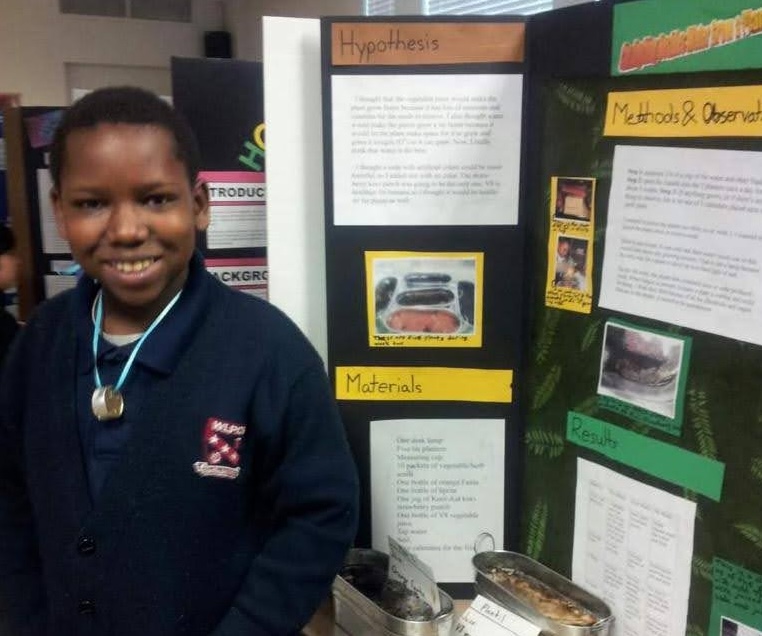
Meaning, while was raising my children, I spent my days and nights working on criminal justice reform and trying to ensure that both my son and daughter spent their out-of-school time in community with others: Girl Scouts, swimming and violin for my daughter, and Big Brothers of America, karate, saxophone, and wrestling for my son. I even published a blog, Not These Two, chronicling my efforts to ensure my kids would not be included in those statistics. After rushing to be first to register them for camp, filling out scholarship applications for special programs and schools, and putting thousands of miles on my car — and my body — I can say I succeeded, but now I wonder if perhaps I was too laser-focused on saving them both from having a prison or jail ID, and didn’t consider other identity issues, like gender and sexual orientation. It never occurred to me that the son I was worried about getting caught up in our school-to-prison pipeline would at some point decide he wanted to be identified as my daughter.
Now I wonder if perhaps I was too laser-focused on saving them both from having a prison or jail ID, and didn’t consider other identity issues, like gender and sexual orientation. It never occurred to me that the son I was worried about getting caught up in our school-to-prison pipeline would at some point decide he wanted to be identified as my daughter.
So upon hearing my child’s news via Zoom, my first priority was to get them re-enrolled at a new college, help them get their weight down; (they’d gained more than 30 pounds during the first college semester.) Basically, I wanted to compartmentalize everything and prioritize one action item at a time. However, I soon realized that wouldn’t best serve my child’s needs. By summer 2023, I was exhausted from all of the work I was doing on this issue, i.e., balancing work, finding support from other parents, researching definitions for the various trans identities, and interviewing therapists for everyone in the house. I was trying my hardest to understand what I considered to be a “late” coming out. Why? Who? When? How? And what does this actually mean?
Flashing back to the days before “transgender” was a common family term
[Author’s note: In this section, because I’m referencing a time where my child still went by he/him pronouns, I’m using those “old” pronouns. Currently, my child uses “she/her” pronouns.]
Reflecting back when my son’s preferred pronouns were he/him, my first born child went away to his freshman year of college in fall 2021, when the world opened back up right “after” the COVID-19 pandemic. So, at that point in time, we were both used to being up-under each other in the house on a daily basis. During those pre-college months, my young adult was forced to hear me drop gems on adulting and being successful (well, I thought they were gems). While living in my home, during his junior and senior year of high school, he always responded and complied when I asked to check homework. And I would advocate on his behalf with teachers and counselors when necessary.
But, naturally, once my baby was away at college, my vigilance and scrutiny of his health, well-being, and studies was hugely diminished. Sure, we all checked in as often as he’d allow – he’d sometimes respond when we texted, rarely answered the phone when we called, sporadically replied to emails. While I did visit two months into his first semester, he pretty much experienced the next seven months alone, without his overbearing mother’s advice or check ins. His dad, a former Pentecostal minister-turned social worker, also attempted to check in — as did his step dad, (my Southern, “man’s man” husband). My 70-something mother in California, who kept offering to be his virtual tutor, also reached out sporadically. A few of my friends even contacted reached out, but each time they tried, they turned back to me, asking why they hadn’t heard back, as if I was the one who had an all-access pass to communicate with my kid at will.
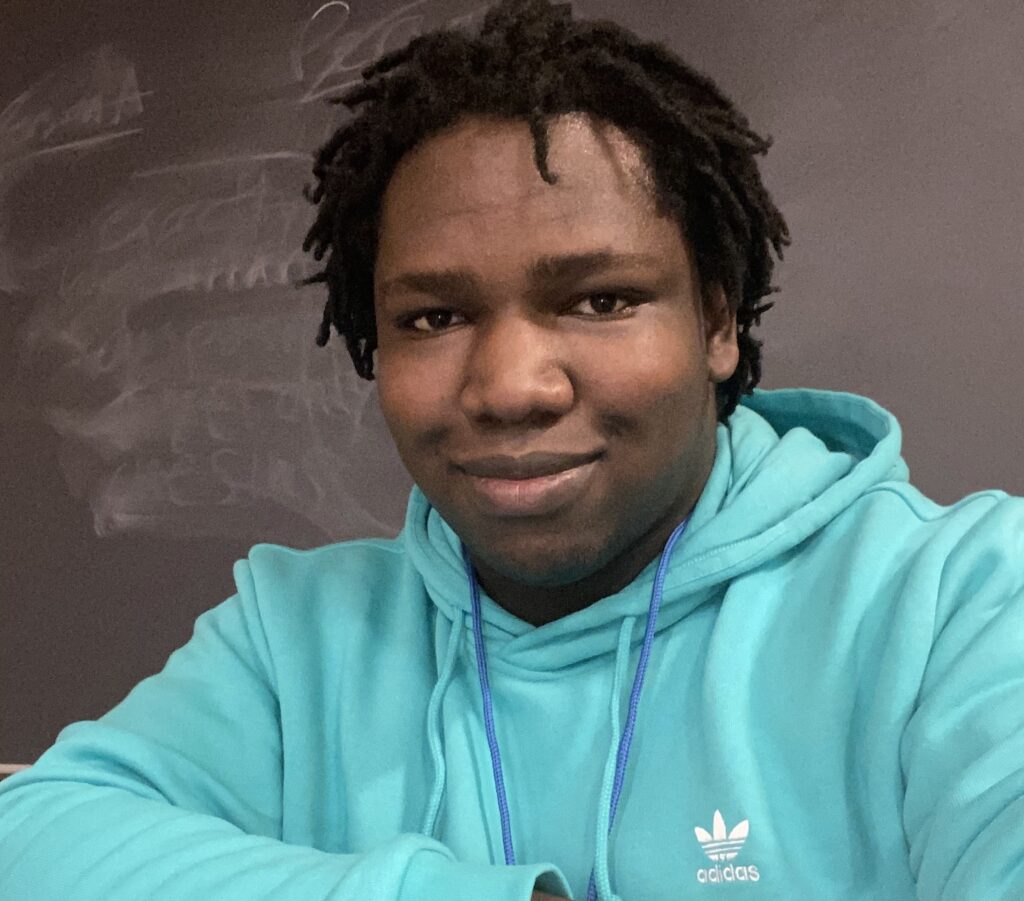
In retrospect, I now know that he was going through a lot of inner turmoil and changes and needed time to work through it. I think what was missing was a community that would welcome his questions, insecurities and decisions. Being so far away from us — and living in a state that wasn’t as inclusive as the District of Columbia — added to their challenges at that time.
Navigating challenges around supporting a transgender child
Some aspects of this situation that were likely not unique to our family, but were nonetheless challenging for me, were 1). Immediately responding appropriately and lovingly to my child’s newfound identity and journey; 2). Making sense of a completely new and unexpected family dynamic; 3). Educating my old-school husband on politically correct language; 4). Reminding my mother of her grandchild’s new name; 5). Checking in with my (other) daughter to see how she was settling into the idea of referring to her (formerly) “older brother” as her older sister; 6). Debating with my ex-husband how to support our first-born child, who was no longer a minor. I was doing all of this simultaneously, while trying to keep my own complex emotions together. This meant doubling up on my personal fitness to keep a clear head and getting out of the house to hang with friends to either escape the pressures or debrief with trusted confidants about our family’s news.
It also meant shopping for therapists for myself. Unfortunately, that was a bust. I tried two different ones over three months’ time, and neither could keep a poker face when I shared my news. Their eyes got big at every detail and they actually said things like “that’s crazy,” or “I don’t get it.” I mean, wasn’t I the one who was supposed to say those things, with them responding with some amazing insights about my family’s situation? So, when that didn’t work to help keep things together, I made do with ice cream, solitary moments on the grass, and crying in my SUV.
In retrospect, I was in denial. Not only was I confused, but I was sure my kid was confused. I wanted to be surrounded by other resourced people in my family, instead of me being the sole person trying to keep it all together and troubleshoot. In our family, each of the differences in our upbringing, parenting styles, worldviews and even what part of the country we each come from — and live in — helps make my child’s journey to womanhood a family-wide transition. It feels a bit like a juggling act on a tightrope while riding a unicycle. As long as a net is underneath, I am willing to fail, as long as I get the chance to try again. I’m willing to fall, gather the balls again (and again), remount the unicycle and ride for my — and his life. I mean hers) my child’s new preferred pronoun, which I must admit, I’m still acclimating to).
In retrospect, I was in denial. Not only was I confused, but I was sure my kid was confused. I wanted to be surrounded by other resourced people in my family, instead of me being the sole person trying to keep it all together and troubleshoot. In our family, each of the differences in our upbringing, parenting styles, worldviews and even what part of the country we each come from — and live in — helps make my child’s journey to womanhood a family-wide transition. It feels a bit like a juggling act on a tightrope while riding a unicycle. As long as a net is underneath, I am willing to fail, as long as I get the chance to try again. I’m willing to fall, gather the balls again (and again), remount the unicycle and ride for my — and his life. I mean hers, my child’s new preferred pronoun, which I must admit, I’m still acclimating to.
Caveat: In the past, I have always been affirming when people I know have shared their preferred pronouns. The only time I’ve taken issue with the request is when it entered my personal bubble. As such, I am making an admittedly slow transition in honoring the request of my son, who would prefer that I now call my daughter. I’ll get there!
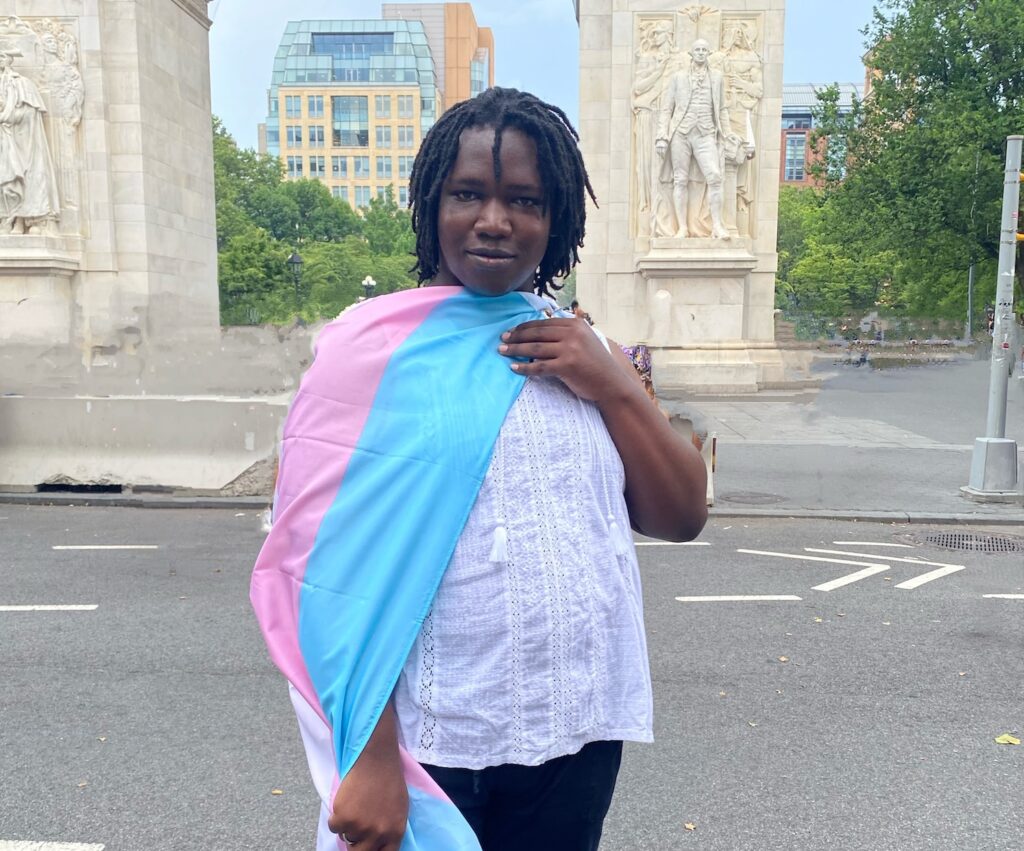
Our family’s (still continuing) journey
At the end of winter 2023, “VJ” (the newly preferred nickname of my first-born, who was now approaching age 21), brought home a flier about a virtual group for families of young people who identify as trans. VJ was nonchalant about showing us the brochure, but I took that as my cue to show my support and learn more.
Shortly after, I attended the four-session Families in Transition class hosted by Whitman-Walker Health located in Washington, D.C. Each hour-long session invited inquisitive parents and guardians to hear from counselors, doctors and trans young people in an effort to learn how to respond to their elementary-, middle-and high school-aged trans children. Even though my child was a bit older at age 21, the sessions were super helpful and it helped me to feel less alone.
When VJ initially made the announcement on Zoom, I wasn’t ready. I didn’t have resources to fall back on, and didn’t know how to respond. Since then, I’ve learned the importance of several aspects of this journey, so that if your child comes out to their family as trans, they feel supported and safe. Remember: The LGBTQIA community already faces the possibility of nonacceptance outside of their home, so it is important that they feel safe at home amongst family. Family rejection increases the likelihood of emotional or physical abuse, homelessness, victimization, substance abuse, and transactional work, according to Whitman-Walker Health, the Trevor Project, and National Institutes of Health. Based on what I’ve learned, here’s what I’d tell other parents beginning this journey.
What to do if your child comes out as trans
- Ask what your young person wants to be shared, and to whom, and when. If they have new preferred pronouns, want to be called by a different name, ask them if they prefer to introduce (or reintroduce) themselves to family and friends, or if they need help coming out of the gate. And when making the announcement, don’t apologize. While the news may be unexpected and misunderstood, it should not be considered bad news, according to Whitman-Walker Health.
- Understand your young person’s gender expression and preferred gender — and understand there is a difference between gender identity and sexual orientation. Gender identity defines how your loved one aligns on the gender spectrum: male, female, or agender/non-binary (neither or both). Sexual orientation is a person’s identity in relation to the genders to which they are sexually attracted; the fact of being heterosexual, homosexual, etc.
- Watch for signs of gender dysphoria. Be ready to respond to your young person’s discomfort around how they feel in the body they were born in, seek professional advice and discuss solutions.
- Be inquisitive around how your child navigates the already uncomfortable school bathroom dynamic. Studies show that young trans people rarely use school bathrooms for various reasons including bullying and peer discomfort. When coupled with transkids’ concerns around the inability to use their preferred bathroom, physical medical conditions can be exacerbated, like urinary tract infections (UTI) or kidney issues.
- Be supportive. Be open to discussion, educate yourself, offer words of encouragement, advocate for your transchild’s needs, and be honest with them about your own mental transition during their journey. Understand, however, that they cannot help you process your feelings of grief or loss.
- Make an appointment with your pediatric doctor. Be honest about your child’s wishes. The doctor will know what to ask your child, what to look for during medical examinations, and can explain the development of your child’s mind and body. The doctor can also advise your family on the impact of any next steps that you decide on together.
- Be mindful about the LGBTQIA laws in your region. Make sure you and your young person are aware of your region’s laws, safe havens, and overall climate around inclusivity. If your transchild is leaving for college soon, be mindful of the states’ and college campuses that your young person is considering. The Human Rights Campaign published its Municipal Equality Index, a live resource that provides a rating for each state based on how inclusive municipal laws, policies, and services are of LGBTQ+ people who live and work there.
- Seek out resources in your community like discussion groups. Some of them are free at local resources such as libraries or community centers, and others are hosted by medical professionals and may be covered by yours or your child’s insurance. If you’re able, consider individual and family counseling. Talking out concerns and next steps can be helpful to all involved.
These days, almost two years after my child’s Zoom announcement, we’re in a much better place, but still don’t have all the answers. VJ is finishing community college and awaits decisions from universities to transfer to. A big part of their decision will be if the school is gender affirming and has accommodating housing. VJ and I made a pact to go to the gym three times weekly and weight is down — for both of us. My concern is, without me as an accountability partner, will VJ be able to maintain consistency in their mental and physical health? We talk — and debate — regularly about VJ’s transition goals, sexual identity and the difference between identifying with versus empathizing with cisgender women. I recently complained about my recurring debilitating ovulation and menstruation pain, and VJ said they were jealous. HELLO!?
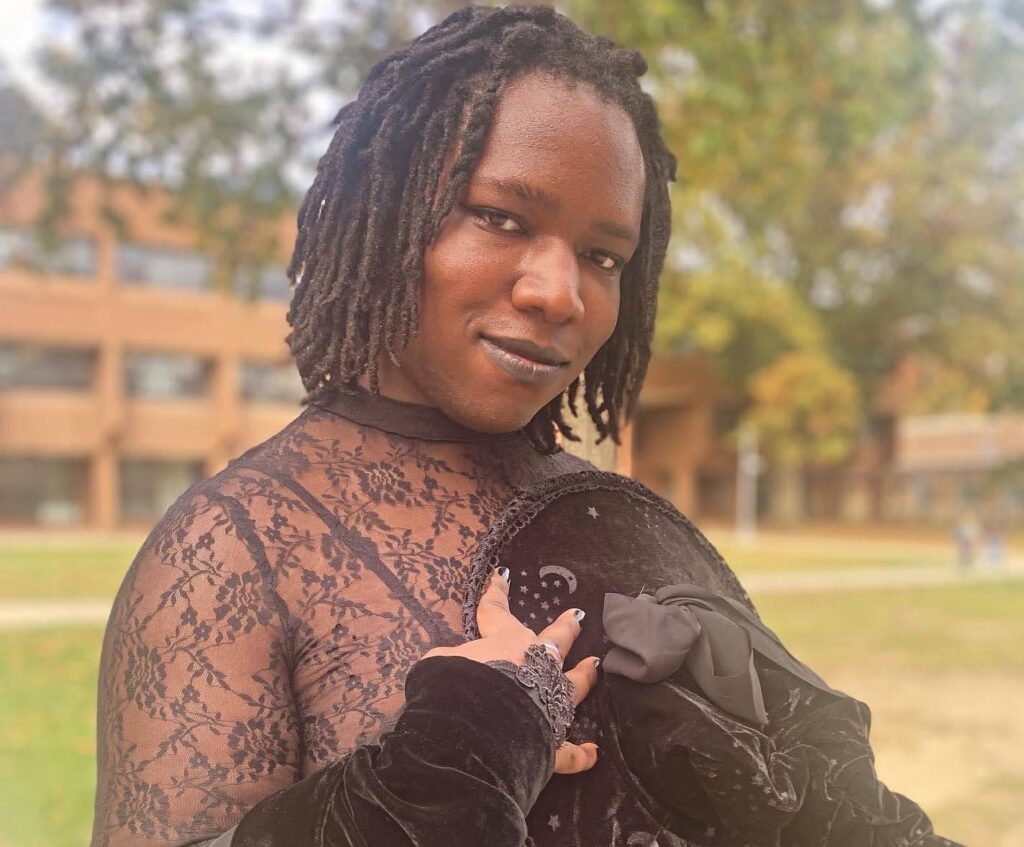
Last fall, I dropped off VJ for a gender-affirming medical appointment where the expectation was that there would be a wait of several months before they would start treatment. Of course, I wanted to accompany VJ and continue my role as advocate, but my offer was declined, and I didn’t fight it. VJ did promise to update me afterwards and they came home excited, and with two medications in hand: estradiol and spironolactone, (which are estrogen and a testosterone blocker, respectively). VJ hasn’t yet started them because the doctor advised that a decision needed to be made around their interest in having children and sperm banking, because the medication will decrease sperm production, thus reducing fertility. VJ was kind enough to ask me if I wanted to be a grandmother. I was touched. This is indeed a family transition that I hadn’t planned on, but I’m here for it … however it transpires.


